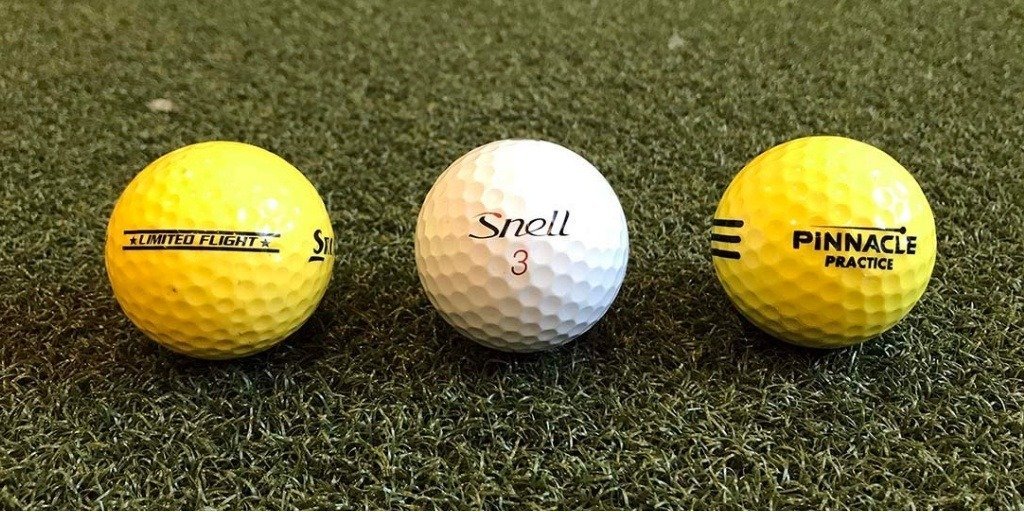
Did you ever stop to think how different the typical range ball would perform against a premium golf ball that you play on the course? I've been curious for a while, so I put it to the test.
In this article, I'll help you understand how a range ball is manufactured differently, and more importantly, how that can alter the ball flight you see on the driving range.
The Main Differences
I think most golfers know there is a difference between range balls and premium balls, but I was interested to find out what exactly it was.
So I reached out to one of the foremost authorities on golf balls, Dean Snell. Dean is the founder of Snell Golf, and he spent more than 28 years in golf ball research and development. He is listed on 40 U.S. patents and was part of the team that developed the original Pro V1 ball for Titleist. He also launched several popular golf ball lines for TaylorMade. Long story short – Dean knows a thing or two about golf balls.
According to Dean, most range balls use a very cheap base rubber. There are very loose specs, which means you can expect different performance within the same batch.
The covers of range balls are typically made of a thicker (and firmer) Surlyn blend to make them more durable. Additionally, there is a thick layer of paint applied to help preserve the external finish. Overall, Dean says you can expect slower ball speeds and very different performance on crucial launch characteristics such as spin and height versus a premium ball.
In his opinion, they are suitable for warming up before a round, but you should not base any kind of data off of range balls for club fitting.
Range Balls Tested
My golf course has two kinds of range balls, a limited-flight ball, and a typical practice model. I collected a random sample of both (don't worry I returned them!) to get an idea of how they would perform versus a premium ball.
For my test, I used the Snell Golf MTB Black. I have been playing with this ball the last several years, and I showed that they performed almost identically to the Titleist Pro V1 in my review earlier this year.
To get an idea how the balls performed, I took full swings with my Sand Wedge, 7-Iron, and Driver.
You can see with my Sand Wedge there was a progression in ball speed, distance, and height. Both range balls are flying lower and shorter than the Snell MTB Black. They're in the ballpark, but there is a difference in performance.
With the 7-iron I start to see more significant differences. The same trends hold up, but the discrepancies are much larger. I can launch my 7-iron significantly higher and farther with the Snell ball versus both range balls.
Lastly, with the driver, you see even bigger changes in ball flight. Between the Snell ball and the limited flight ball, I am gaining nearly 40 yards in total distance.
Key Takeaways
I think the test shows that there are some significant differences between range balls and premium balls. While I don't think you should ignore what happens on the range, you should be aware that there can be changes in the trajectory and distance.
Therefore, I wouldn't use your distances on the range to benchmark your club distances. It would be best to do that with a launch monitor using premium balls or with an on-course shot tracking system like GAME GOLF or ShotScope.
However, I don't want to discourage you from practicing with range balls either. I have been practicing my whole life on practice ranges and used my ball flight to make significant swing changes. Think of it more like a relatively close simulation of what you would see on the course.
We care about the protection of your data Read our Privacy Policy